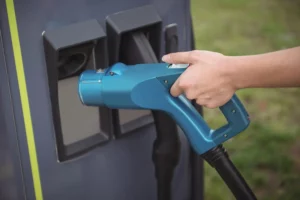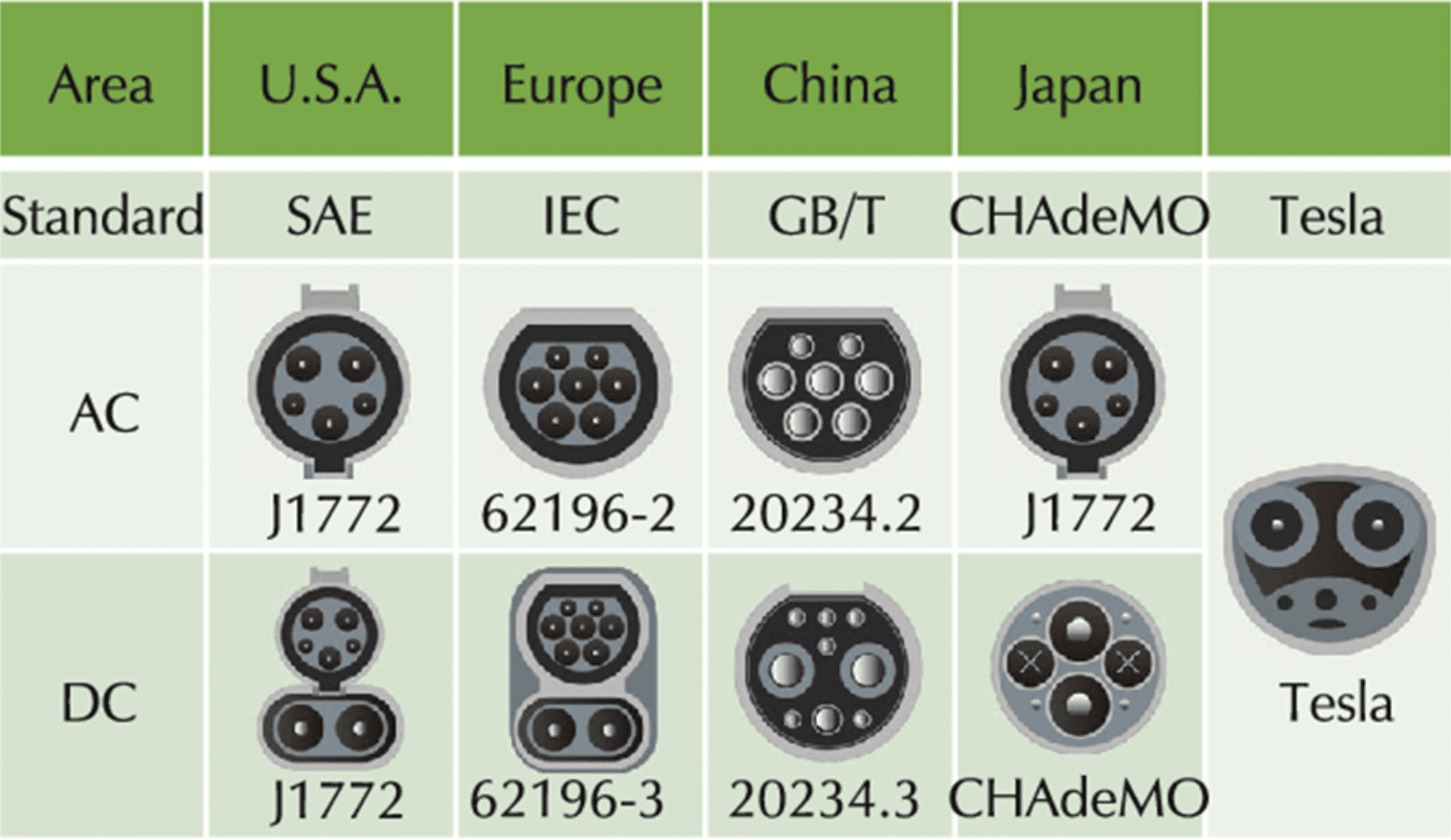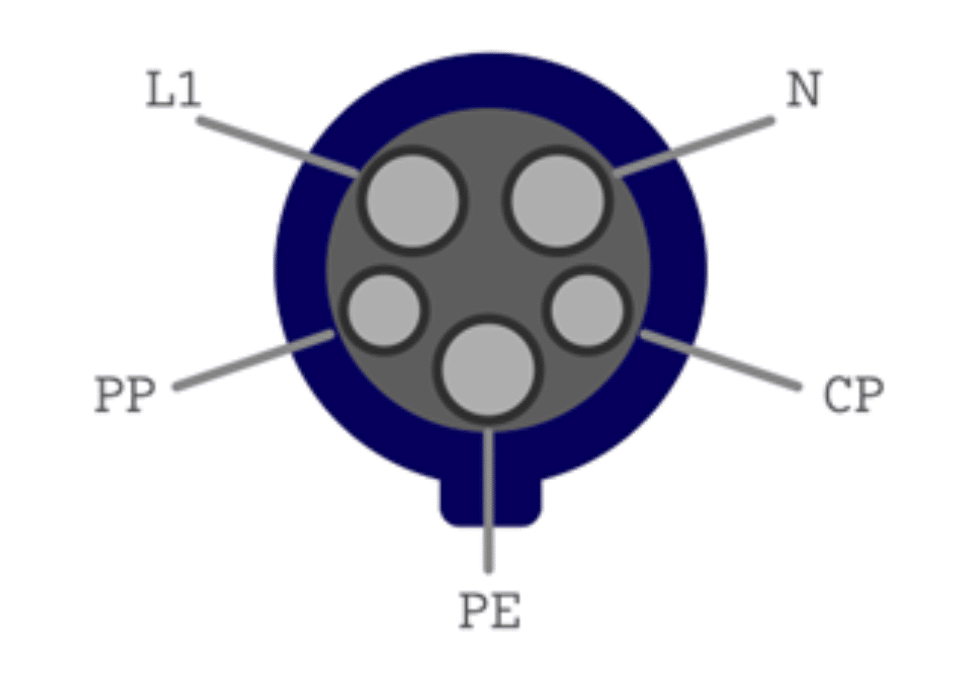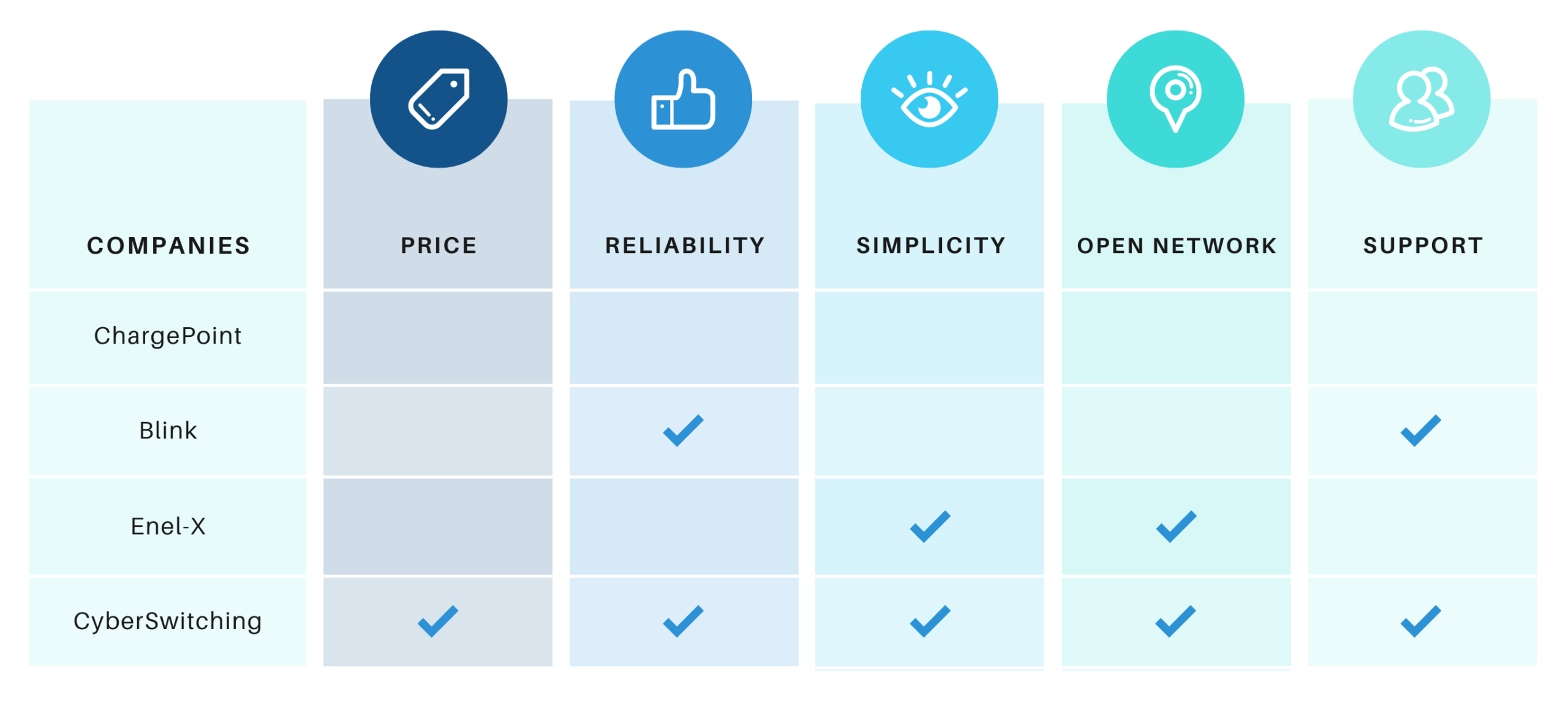
Home / EV Charging News / J1772 Level 2 Charger
The SAE J1772 Level 2 charger is an international standard EV charger. The SAE J1772 is also known as a Type 1 connector or commonly referred to as a J Plug. This connector is used in Electric Vehicles (EVs) mainly in North America and Japan, operating with a single phase of 120V (America) or 208 -240V (Japan), delivering up to 19.2 kW for AC connections.
Learning in detail about Type 1 connectors offers EV owners a better understanding of the charging details of their vehicles. In this article, we will list the different connectors used worldwide for AC and DC charging, introduce a brief history of the SAE J1772 charger, and explain its main features.
The SAE J1772 and Type 2 connectors are the norm for EV charging in the U.S. and Europe respectively, but there are other EV charging connectors used across different regions. In this section, we will list and name the standard for all of these regions and briefly explain these connectors.

Figure 1: EV Charger Connector Standards – Source: Jia, Q. & Long, T.
Figure 1 illustrates the different connectors used for EV charging with AC and DC across the world. The following is a brief explanation of these connectors.
The first EVs in the U.S. charged with the SAE J1773 protocol, featuring an inductive charging system. In 2001, the California Air Resources Board (CARB) rejected the SAE J1773 connector and switched to an early version of the J1772 designed by Avcon, featuring a squared shape and a 6.6 kW power rate.
A few years later, the CARB requested an upgraded version of the J1772 featuring a higher power rating, leading to the creation of the current SAE J1772 level 2 charger. The single-phase connector was designed by the Yasaki Corporation, operating at 120-240V AC at a maximum current of 80 amps.
The J1772 was certified by the UL and finally voted as the standard by the SAE in July 2009’s committee. The newly designed J1772 connector became the SAE J1772 charger and was mandated as a standard by the CARB in 2012 and approved as an international standard under the IEC 62196-2 standard.
The level 2 charging SAE J1772 connector is a standard for EVs in the U.S. and Japan. This connector designed by the Yasaki Corporation features a 5-pin layout for AC charging.
The main 3 pins connect the Single-Phase AC Line 1 (L1), Neutral AC (N), and Protective Earth (PE) to the EV. The 2 additional pins are the Control Pilot (CP) and Proximity Pilot (PP), operating as safety and communication mechanism between the EV and the charging station.

Figure 2: SAE J1772 Layout – Source: EQPassion
The rated power for AC charging with a level 2 J1772 connector varies. A single-phase 120V connection can operate at a maximum current of 16 amps, delivering up to 1.92 kW, while a split-phase 208-240V connection can operate at a maximum current of 80 amps, delivering up to 19.2 kW. The CCS Combo 1 modification of the SAE J1772 connector, has 7 pins and can deliver up to 400 kW for DC charging.




